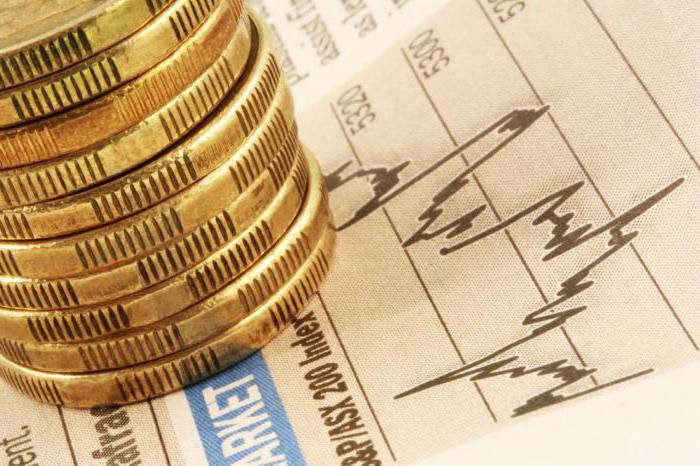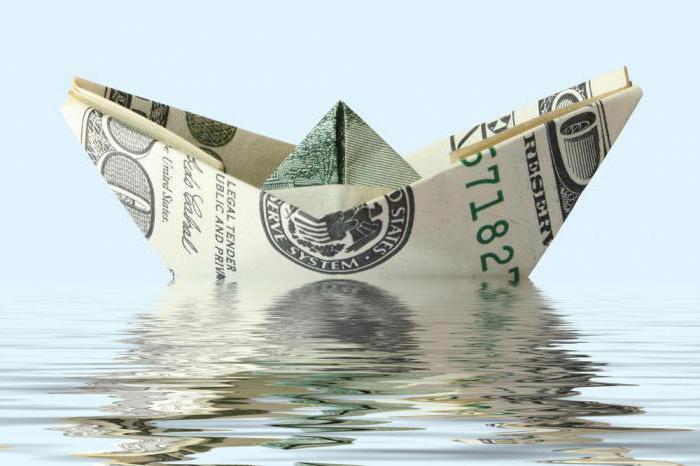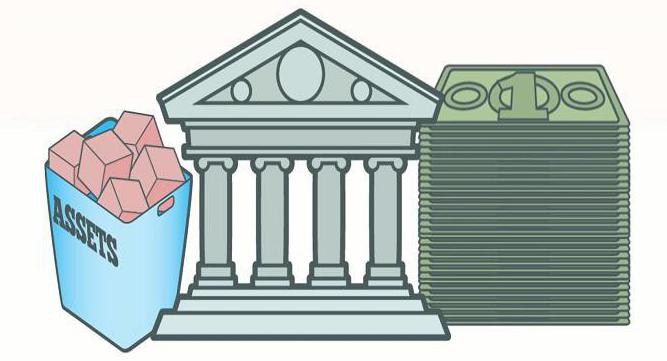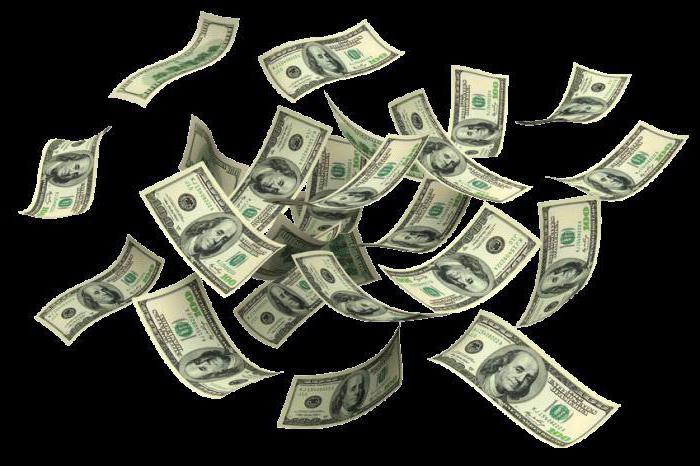The company's capital turnover is the difference between the current assets owned by the company and its current liabilities.
Net capital
By the term "net capital" I understand the difference between the total amount of assets that are on the balance sheet of the enterprise, and the size of all liabilities. If the amount of assets exceeds the amount of liabilities, this indicates a positive net capital. Accordingly, net capital is negative when the company has more obligations than assets.

The net capital ratio is very important for the corporation, since a positive value indicates a stable financial condition of the economic entity. If the amount of assets significantly exceeds the size of the obligations, the company is highly stable. There is also relative stability - when the difference between assets and liabilities is insignificant.
Capital cycle
Capital turnover is a process that begins with investing in production, and ends with the production of products, work being performed or services provided. Capital turnover is an ongoing process. Its duration is determined by how quickly the advanced funds make a full turn and when the owner of the company receives an effect from him in the form of cash (sometimes in the form of a social effect).

The peculiarity of capital turnover is that the funds invested by the owner in production are not fully returned. Here the whole point is that, in addition to working capital, fixed assets take part in the production process, which are assets that transfer parts of their value to finished products, and are also consumed for several years.
Long-Term Capital
Fixed assets (OS) are assets that are able to take direct or indirect part in the production process. Their distinguishing feature is that the OS can be used for many years, and their value is transferred to the cost in parts by depreciation.
These include buildings, buildings, vehicles, equipment, etc.
Determining the effectiveness of the OS
There are a number of parameters that are used in the economy of enterprises to calculate the effectiveness of using the OS of the company. These include the following coefficients:
- Secured by fixed capital.
- Armed with capital.
- Return on fixed assets.
- Capital intensity.
PF security
The first of the indicators that is used to assess OS use is security. It is defined as the ratio of the value of fixed capital to the area of agricultural land. It must be remembered that this parameter can only be used to assess the effectiveness of the funds of agricultural enterprises. The calculation of the coefficient is presented below:
- About = SS.G. / N, where
About - equity;
Ssg - the average cost of capital per year;
PS.u. - the area of agricultural land.

Armament
This index shows the size of fixed assets, which falls on one average annual employee of the enterprise:
- B = Ss.g / K, where
B - armament with capital;
K– the average annual number of company personnel;
SS.g - the value of fixed capital on average per year.
Recoil
Return on assets is calculated as the ratio of all products in monetary terms, which was manufactured by the company during the analyzed period, to the cost of fixed assets for the period on average.This ratio plays an important role in assessing how efficiently the company is able to use its own fixed assets. An increase in the parameter is considered a positive trend, since this means that the volume of output per one monetary unit of the value of fixed capital is growing. The normative value of capital productivity is more than one.
- From = VP / SS.G., where
From - return on assets;
VP - total production of the company in monetary terms;
Ssg - The cost of capital on average per year.
Capacity
Capital intensity - this is the inverse indicator of capital productivity. It can be calculated in the following ways:
- E = (From) -1 = 1 / From, where
E - capital intensity;
From - return on assets.
Also, the indicator can be calculated as the ratio of fixed capital to the value of gross output created during the reporting period.
- E = (SS.G. / VP), where
E - capital intensity;
VP - the value of the gross output that was produced by the enterprise for the reporting period;
Ssg - the average cost of fixed capital for the reporting period.
The company must strive to increase the rate of return on assets. This will mean that capital is being used efficiently. In this case, the coefficient of fixed capital will decrease.
Working capital
These are the funds of the enterprise that take part in the production process, are completely consumed, being part of the cost of production, and are used during one production cycle. Examples of working capital can be raw materials, money, salaries of company personnel, etc.

In the balance sheet of the enterprise, working capital is displayed in the second section of the asset. The components of this type of assets are:
- Stocks of the company.
- Unfinished production.
- Finished products of the company.
- Receivables.
Liquidity
Liquidity - the ability of assets to be converted into money in order to repay the current debt of the company. This is at the center of all the constituent components of working capital.
Each asset of the company has a different degree of liquidity. The least liquid are non-current assets. The money held at the cash desk of the company and on its accounts is an absolutely liquid asset.

Liquidity ratios
All assets according to their liquidity are divided into four categories:
- The most liquid.
- Assets that can be sold in the shortest possible time.
- Assets that cannot be quickly realized.
- Hard to implement.
Each of the four groups of assets corresponds to four groups of sources of financing:
- Urgent.
- Short term.
- Long term.
- Permanent liabilities.
Such a classification was carried out in order to be able to determine the liquidity of the entire enterprise as a whole. A company is considered liquid in the event that the size of each of the types of assets on the balance sheet exceeds the size of the corresponding liability.
Indicators for assessing the solvency of the enterprise
To determine the liquidity level of an enterprise, the following indices are used:
- Coverage ratio.
- Quick ratio.
- Absolute liquidity ratio.
Each of these indices shows how quickly the company is able to convert its assets into money in order to pay off current payables.
- KP = (Vol. A - memory) / THEN, where
KP - coverage ratio (the second name of the indicator is the current liquidity ratio of the company);
About. A - current assets of the enterprise;
ЗУ - debts of founders on contributions;
THAT - short-term obligations (current).

This indicator shows how quickly the company is able to recover its short-term debts using only working capital.
The second indicator - quick liquidity - reflects the company's ability to pay off all its current liabilities if it has problems with the sale of products. The coefficient can be calculated as follows:
- Ksl = (TA - Z) / THEN, where
Ksl - quick ratio;
TA - current assets of the company;
З - stocks;
THAT - current liabilities.
The last indicator for calculating a company's solvency is called absolute liquidity. The calculation formula has the following form:
- Cal = D / TO, where
Kal - absolute liquidity ratio;
D - money, as well as their equivalents;
THAT - current liabilities.
The value of this parameter should be approximately 0.2. This means that every day the company is able to repay 20 percent of its current liabilities. The index shows what percentage of its obligations the company is able to repay in the very near future.
Determining the effectiveness of the use of working capital
As in the case of fixed assets of the enterprise, there are indicators that give a characteristic of how efficiently the company uses its working capital. There are three such parameters:
- Turnover ratio.
- Duration of capital turnover.
- Load factor.
Turnover and working capital loading
The first and main indicator in assessing the efficiency of capital use is the turnover ratio. This parameter is an analogue of the capital productivity ratio, which is used to calculate the effectiveness of fixed assets.
- Cob = RP / Sob, where
Cob - turnover ratio;
RP - sold products in monetary terms in a certain period;
Sob - the balance of current assets.
The indicator indicates how many revolutions of working capital are made for one certain period. For an enterprise, it is considered positive when this ratio increases.

The inverse index is the load factor. It can be calculated as follows:
- Kz = Oob / RP = 1 / Kob, where
KZ - load factor;
Cob - turnover ratio;
RP - sold products in monetary terms in a certain period;
Sob - the balance of current assets.
Capital turnover
This ratio is calculated based on the turnover ratio. The calculation formula has the following form:
- Pob = D / Cob, where
Pob - the period of turnover of working capital;
D is the number of days;
Cob is the turnover ratio.
For the calculation, the number of days in the period is taken. It can be a quarter, a month, half a year, or a whole year. Most often, the analysis of the effectiveness of capital turnover during the year.

The value of the coefficient depends on the turnover ratio. A positive trend for the enterprise is considered to be a decrease in the turnover period, since this means that the turnover ratio is growing, and with it the rate of capital turnover is growing. The faster capital rotates, the more attractive the company is considered to be for investors.
Rate of return
The last of the indicators that are commonly used to determine how capital is used is the rate of return. This indicator takes into account both negotiable and basic. The company’s rate of return is calculated as the ratio of profit to the total cost of capital of the company.
- Np = P / (Soc. + Own.s.) * 100%, where
Np - rate of return;
P - profit;
SOS. - the cost of fixed assets;
Own - the value of working capital.
There are several ways to increase working capital efficiency. Firstly, the company can optimize its stocks. Secondly, attention should be paid to the growth rate of working capital. You should also increase sales. At the same time, the rate of increase in sales should exceed the rate of increase in fixed assets.

The effectiveness of capital utilization of the enterprise seriously affects the result of economic activity. Any company should strive to more rationally use its capital, which will give it the opportunity to increase the number of products and the volume of profit.